November News from the Country Park
In this month's newsletter you can find out about what happened at our 'Awesome Autumn' October half term family event, see some more fantastic art work from the Country Park and learn something new about bats. You can also travel back in time with Sally's 'From the Newspapers' feature and learn more about the origins of the railway which runs through the country park. Looking ahead, there is information about how to keep our wildlife safe this bonfire night and an exciting new exhibition which has just opened at Beverley Art Gallery.
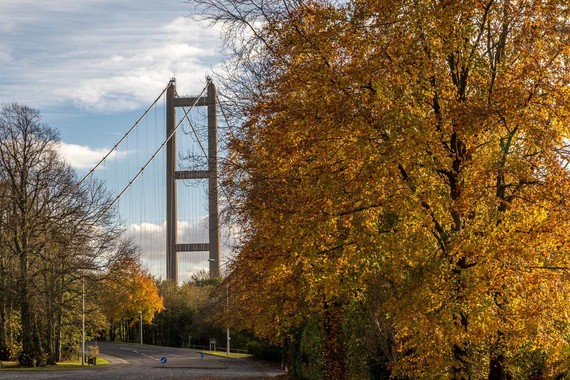
Autumn Awesome Family Event!
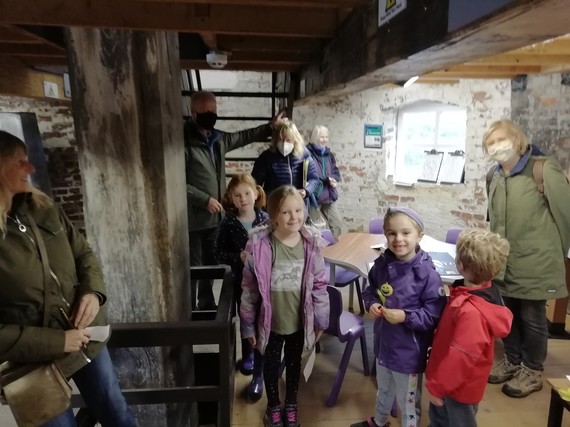 In the pink coat in the middle of the picture, is Ivy aged 7!
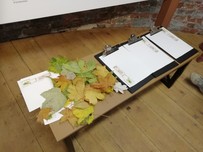
October half term saw our 'Awesome Autumn' event for children and families, the day was a great success! Inside the mill, manned by our heritage officer and volunteers, we had 318 visitors throughout the day. There was a Pipistrelle bat trail inside the mill, with a prize for the person who could find the most bats. The winner was 8 year-old Lacey from Hessle, who came with her Grandma. Lacey found 29 out of 30 bats and she was absolutely delighted with her prize, a Finding Nemo story Book with soft toys and a bucket of chalk. Inside the mill, our younger visitors also enjoyed autumn themed colouring-in and storytelling.
|
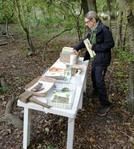
A trail leading from the mill into the Country Park led young adventurers along the meadows and woodlands to the hibernation den building activity. Under the guidance of our Countryside Access Officers Bev, Chris and Jim, around 200 participants constructed numerous wildlife-friendly hibernacula made of logs, leaves, moss, sticks and twigs. These will make brilliant winter homes for the reserve's insects, amphibians and small mammals (see below). A huge thank you to everyone who took part in the day!
|
 One of the many hibernacula built during the Awesome Autumn event.
From the Newspapers: The Opening of the Hull & Selby Railway, 4th July 1840
By Sally George, Quarry to Country Park Volunteer
In the York Herald of 4th July 1840 an article mentions the opening of the Hull & Selby Railway, this is the rail line that still runs through the Country Park today! The feature includes a fascinating description of the scenery around Hessle Foreshore.

"The first part of the works on the line is at Lime Kiln Creek, the point where the trains issue from the Company's yard. Here extensive improvements are in the course of being made, in the formation of wharfs for the loading and unloading of goods into or out of vessels lying in the Humber or in the creek. The Company's wharf alone covers about 4,000 square yards.
|

From this spot the line of railway runs for three quarters of a mile on the embankment formed on the foreshore of the Humber, the footpath formerly the brink of the river lying in-shore to the north of the railway throughout this distance it then crosses the rails by a footbridge of sufficient height to allow loaded trains to pass beneath it, and commanding a fine view of the Humber and the railway. The latter having now completely cleared the town, slightly diverges in-shore for three miles and a half, until it reaches Hessle haven where the passenger meets with the first bridge for carriages which crosses the line. The structure is of white brick, faced with stone, and topped with cast iron, flags, &c.
|
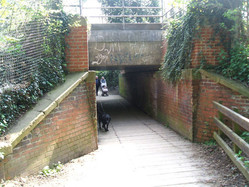
Within a very short distance are two skew bridges, beautifully executed, and supporting carriage roads across Hessle cliff, through which a cutting has been made for perhaps half a mile or upwards, the extreme depth of the cutting amounting to no more than thirty-six feet, and the whole of the excavations, consisting of chalk and gravel, having been most opportunely used in the formation of the railroad. Between the bridges just described stands Hessle Station House - a neat building of white brick, two stories high, but entirely hid within the cutting, the chimnies scarcely reaching to the surface of the adjacent ground. It is, however, a very convenient lodge. Hesslewood House, the seat of J.R. Pease, Esq., is the next object of which a glimpse may be caught at one or two points. Cattle and sheep depasturing on the sloping grounds render the view somewhat picturesque."
|
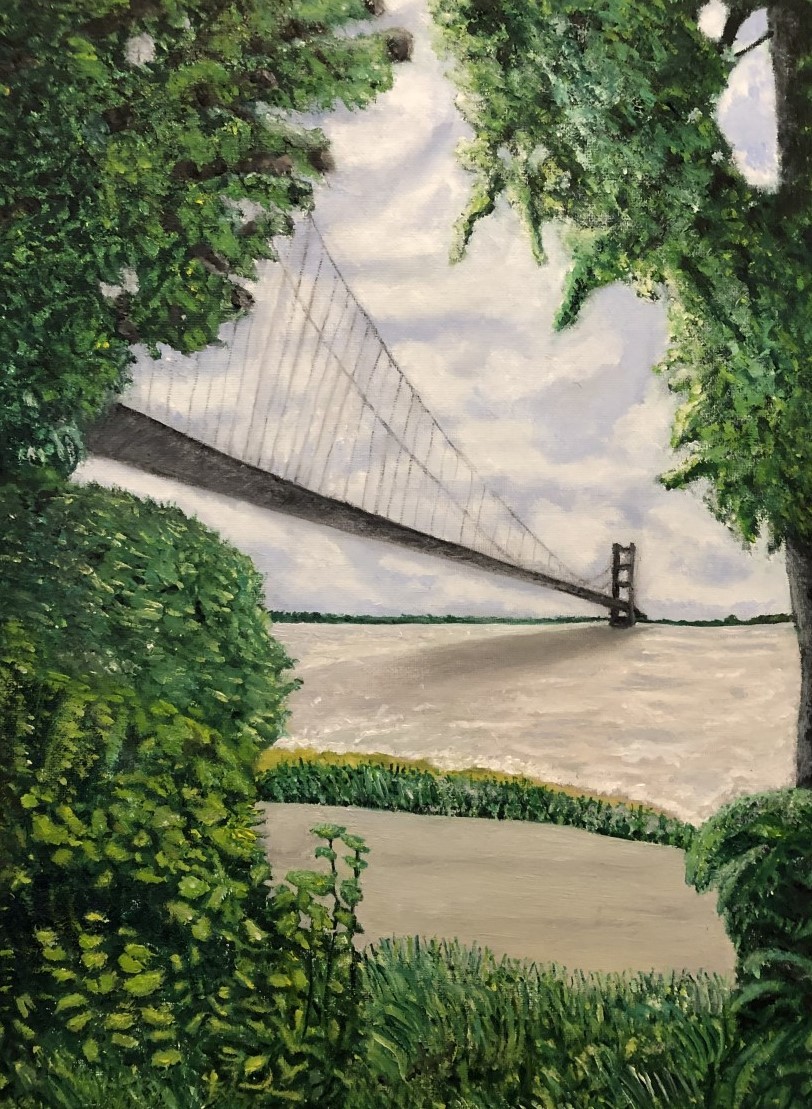 Oil on canvas by Cherl Maston.

You may recall in last month's newsletter we featured a wonderful oil painting of the Country Park's willow tunnel, kindly sent in by local artist Cheryl Maston. Since then, Cheryl has been busy producing another fantastic oil on canvas scene, this time showing the Foreshore and the Humber Bridge. Chery would like to dedicate her painting to all of the men and women who helped build the bridge. Well done Cheryl and thank you for sharing your work!
If you are a budding amateur artist and have created a piece depicting the Country Park, Mill or Foreshore, we'd love to see your work! Please email alex.ombler@eastriding.gov.uk and, like Chery's work, we'll feature it in next month's e-newsletter.
|
Beautiful Bats!
At October's Awesome Autumn event, many of our young visitors enjoyed our bat trail around the mill and the colouring-in sheets with 'bat facts'. These activities aimed to give an insight into the three types of bats which can be found in the Country Park. Pipistrelle, Whiskered and Noctule bats have all been recorded feeding over the ponds and meadow edges during the summer months. Through this recent autumn learning event, we aimed to teach our visitors about these wonderful creatures and try and move away from the idea of bats as something scary, something which often happens at Halloween time.
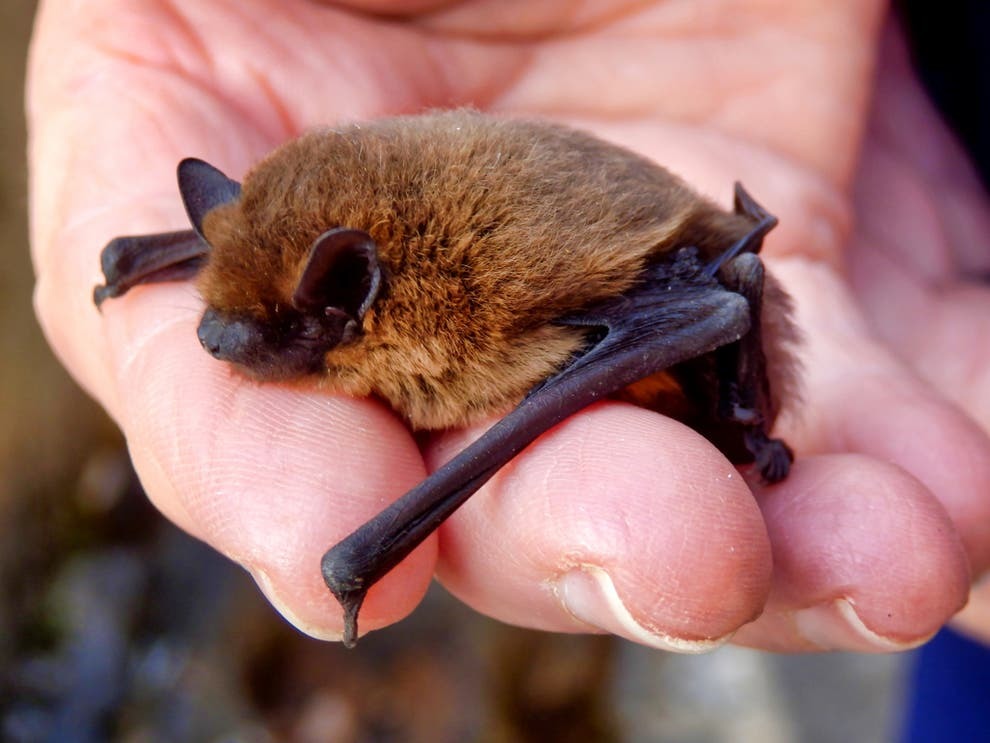 A pipistrelle bat. These particular species can be seen in the Country Park, particulalry during the summer months.

As part of a continuing mission to improve our knowledge of these fascinating flying mammals, here are some more facts about the bats which you might be lucky enough to spot in the Country Park:
- The pipistrelle bat is the smallest and most common bat in the UK.
- All UK bats are nocturnal – preferring to come out only at night.
- Bats feed on midges, moths and other flying insects that they find in the dark by using echolocation.
- Bats roost in tree holes, bat boxes and even the roof spaces of houses, often in small colonies.
- Females give birth to a single pup.
- Bats hibernate over winter, usually between November and April, but may come out to feed on warm days.
|
Keep Wildlife Safe this Bonfire Night
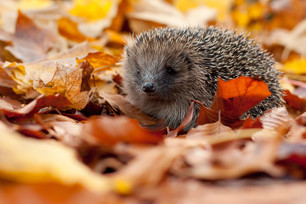
While many people enjoy bonfires and fireworks on the 5th of November, it's important to remember the impact of bonfire night on wildlife. The bright lights and loud bangs of fireworks scare many animals, as well as domestic pets and livestock. To limit this impact you might consider going to a larger organised public event, or buying silent/quiet/animal friendly fireworks.
Fireworks are not the only danger to wildlife on bonfire night. The large piles of wood and sticks which make up bonfires can attract all sorts of birds and small mammals. Hedgehogs are particularly vulnerable to being trapped in garden bonfires as they may mistake bonfire log piles for shelter while roaming through the night. These lovable creatures are named on The Mammal Societies Red List of endangered mammals, which makes the warning for this Bonfire Night more crucial than ever.
If you decide to build a bonfire this bonfire night, there are certain steps you can take to keep hedgehogs safe.
-
Build a Hedgehog Highway: Hedgehog highways are five inch gaps in fences that help prevent the accidental trapping of hedgehogs by allowing access between gardens. Hedgehogs naturally roam through many different gardens whilst foraging for food, finding mates and seeking out shelter. Creating this gap between fencing panels is a small step which can make a huge difference in saving this endangered species while keeping them out of harm’s way.
-
Check your bonfire for wildlife
Once you have assembled your bonfire, use a torch to check the structure for hedgehogs or other mammals. Act slowly and calmly if you spot one and keep a cardboard box with tall sides on hand if you do need to rescue a trapped hedgehog. Large hedgehogs can be released back into your garden when it seems safe to do so. If the hedgehog is very small then it needs to be taken to a rehabilitation centre to be fed up. You can find a comprehensive list of Hedgehog Rehab centres here.
|
In last month's newsletter we explored some of the other fabulous art work by local amateur artists, showing the Little Switzerland, the Whiting Mill and the Foreshore.

Many of you fed back that you enjoyed these, so we thought we'd shared some more, which have been sent in to us by the family of another local artist. During his lifetime, Hessle local, Horace Owen Bontoft (1909-1997) was a prolific painter of scenes around Hessle, including Little Switzerland (see right) and the Foreshore. Back in June, his daughter Sonia, kindly shared images of his work (below) for the Quarry to Country Park heritage project.
|
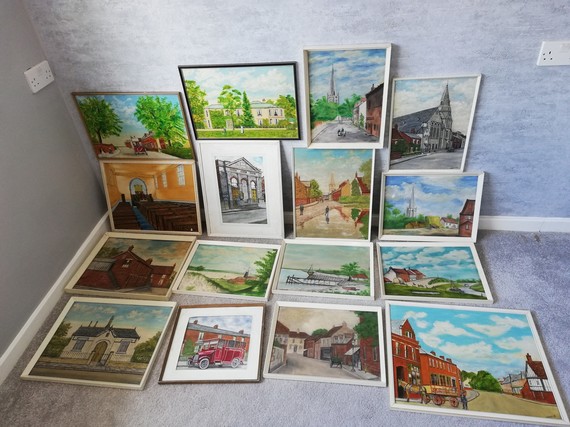 Some of the works painted by Horace.
Some of Horace's works were based on postcards, others were painted on location. One of our personal favourites is this scene below of 'The Cliff' (now more commonly known as the foreshore) as it looked c.1900.
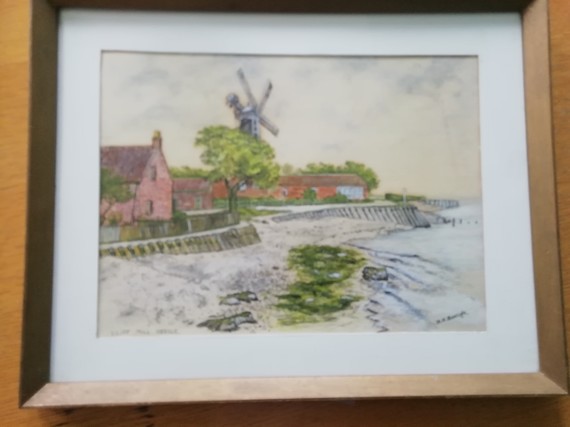 The Cliff by Horace Bontoft.
Remarkably, Horace recorded his own personal reflections of the scene as he saw and remembered it:
"Looking eastwards towards Hull. On the left side of the picture is part of a tree which is in the garden of a cottage in which Mr John Roberts, the foreman of Marshalls Whiting Works lived. At the base of the tree is a public footpath by which one could walk to North Ferriby. Behind the tree, out of sight, was Mr Marshalls Whiting Works. The Chalk quarries which supplied the chalk to the mill shown in the picture, was about half a mile inland, and the cliff face stood about 100ft high, resembling Flamborough Head.
Inside the mill two huge stones revolved driven by the wind, but in later years by electricity. Some of the chalk was crushed into powder and was supplied to firms making toothpaste, paint, cosmetics etc. The chalk was supplied in lump form for making roads and embankments. Mr Marshall stated that Hessle Chalk was amongst the finest in the World. The Mill itself had five sails which was most unusual. On the picture to the right of the mill was a wooden landing, where Humber keelboats used to load with chalk and deliver where necessary."
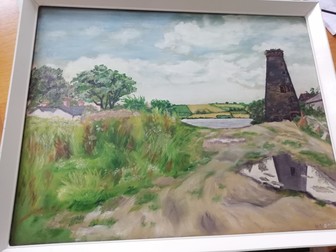
In 1974 Horace visited the same site to recapture the scene, but from a different angle (see left). He parked his car and set up his easel roughly near to where the entrance of the A63 underpass is now located. Horace recorded that he decided to paint this scene as he was saddened to see the dilapidated state of the once thriving mill and whiting works. As you can see in the painting, by this time, the mill had lost its sails, whilst the tower was in an advanced state of dereliction. The land around the site was disused and overgrown.
Although Horace captured this sad scene, change was just around the corner. By this time the construction of the Humber Bridge was underway and a fresh focus was brought to the area. Within a decade plans were underway to refurbish the mill and open it to visitors as a heritage attraction, while work was also being completed to create the Humber Bridge Country Park.
|
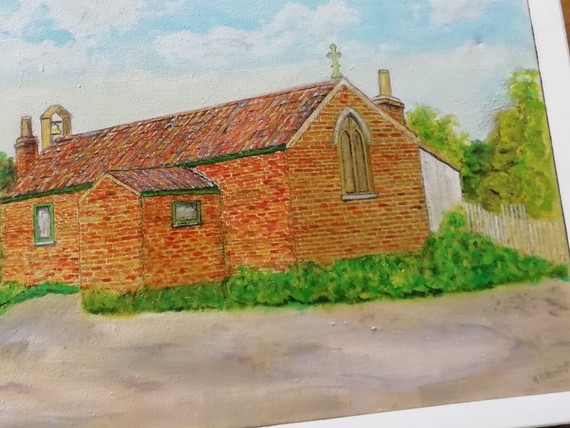 Another of Horace's works showing the Anglican chapel of ease was built at Hessle Cliff in 1864 and situated next to the whiting mill.
'Reflections of Japan in East Yorkshire' at Beverley Art Gallery

'Reflections of Japan in East Yorkshire', a unique exhibition bringing together a selection of items from private collections across East Yorkshire and artwork by Laura Boswell, is now open at Beverley Art Gallery in the Treasure House.
The idea for the exhibition came about over two years ago when the Japanese Embassy introduced the 'Japan-UK Season of Culture', a celebration of the many facets of Japanese culture in the UK.
Beverley Art Gallery was keen to participate in this national opportunity and can confirm that this exhibition is one of the official events of the 'Japan-UK Season of Culture'.
Originally, the exhibition was intended to show a unique collection of toys from the East Riding based collector, Jane Irisa. Then COVID-19 came and the exhibition had to be postponed. During the lockdowns, curator Helena Cox came up with an idea to widen the exhibition's appeal, and the gallery ran a call-out on social media, asking East Yorkshire residents to get in touch.
|
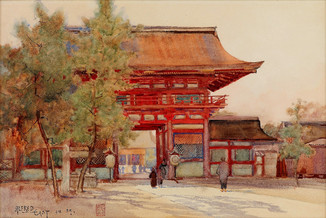
As a result, a group of Japan-lovers has been formed with members ranging from Japanese expats to art and craft collectors, those who worked and lived in Japan and who came back to East Yorkshire enriched and inspired by Japanese culture. The group met Helena over Zoom during the lockdowns and shared their passion and stories about Japan.
Beverley Art Gallery curator Helena Cox explained: "The core of the exhibition is still Jane Irisa's stunning collection of traditional Japanese toys, which she collected from all over Japan during her many journeys there. Jane previously worked in the Oriental and Japanese sections of the British Library, and therefore her collection is brilliantly documented and well researched.
"To accompany this collection, we are showing a selection of items and stories from private collections, including rare items from the Imperial Court, calligraphy, and decorative items, as well as artwork inspired by Japanese culture and a stunning collection of Japanese vintage kimonos."
One of the items, on loan from Beverley-born Philip Highy, is a calligraphy he obtained during one of his many visits to Japan, together with the Eton College Chapel Choir.
Helena Cox added : "The calligraphy reads 'Once in a lifetime experience' - we sincerely hope that this exhibition will indeed be a unique experience for our visitors, celebrating the rich connections between East Yorkshire and Japan".
To celebrate the mutual influence between Japan and Great Britain, the Gallery is delighted to present a selection of works by the renowned printmaker, Laura Boswell. Laura will be showing examples of her work capturing the stunning Yorkshire and wider British landscapes in the traditional Japanese medium of coloured woodblock prints. Laura's long-standing passion for Japan saw her undertake numerous study trips to Japan to emulate the technique. The result is a true meeting of the two cultures, presenting British landscapes with distinctly Japanese optics and aesthetic sensitivity. This will be Laura's first major public exhibition.
The exhibition will show a series of video presentations made by Japanese exchange students from Ochanomizu University (Japan) and Hull University, presenting the stories behind traditional Japanese toys and customs.
The exhibition runs until early 2022. Entry is free and there is no need to book in advance.
For full details of Beverley Art Gallery (opening hours, location, and facilities), visit: www.eastridingmuseums.co.uk
|
Poet's Corner: A Poem for November
|
"The landscape sleeps in mist from morn till noon;
And, if the sun looks through, ’tis with a face
Beamless and pale and round, as if the moon,
When done the journey of her nightly race,
Had found him sleeping, and supplied his place.
For days the shepherds in the fields may be,
Nor mark a patch of sky – blindfold they trace,
The plains, that seem without a bush or tree,
Whistling aloud by guess, to flocks they cannot see …"
|
|
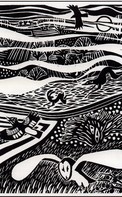 |
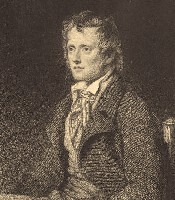
John Clare (1793-1864) is one of English literature’s greatest nature poets. In his time he was commonly known as "the Northamptonshire Peasant Poet". The Shepherd's Calendar is his masterpiece. It is a classic of English poetry and a fascinating work of social history, recording long-vanished aspects of nineteenth-century rural life. The poem provides a calendar of the country year, in which the various tasks performed by the farm labourer take their place. His poetry underwent a major re-evaluation in the late 20th century and he is often now considered to be one of the most important 19th-century poets.
|
|